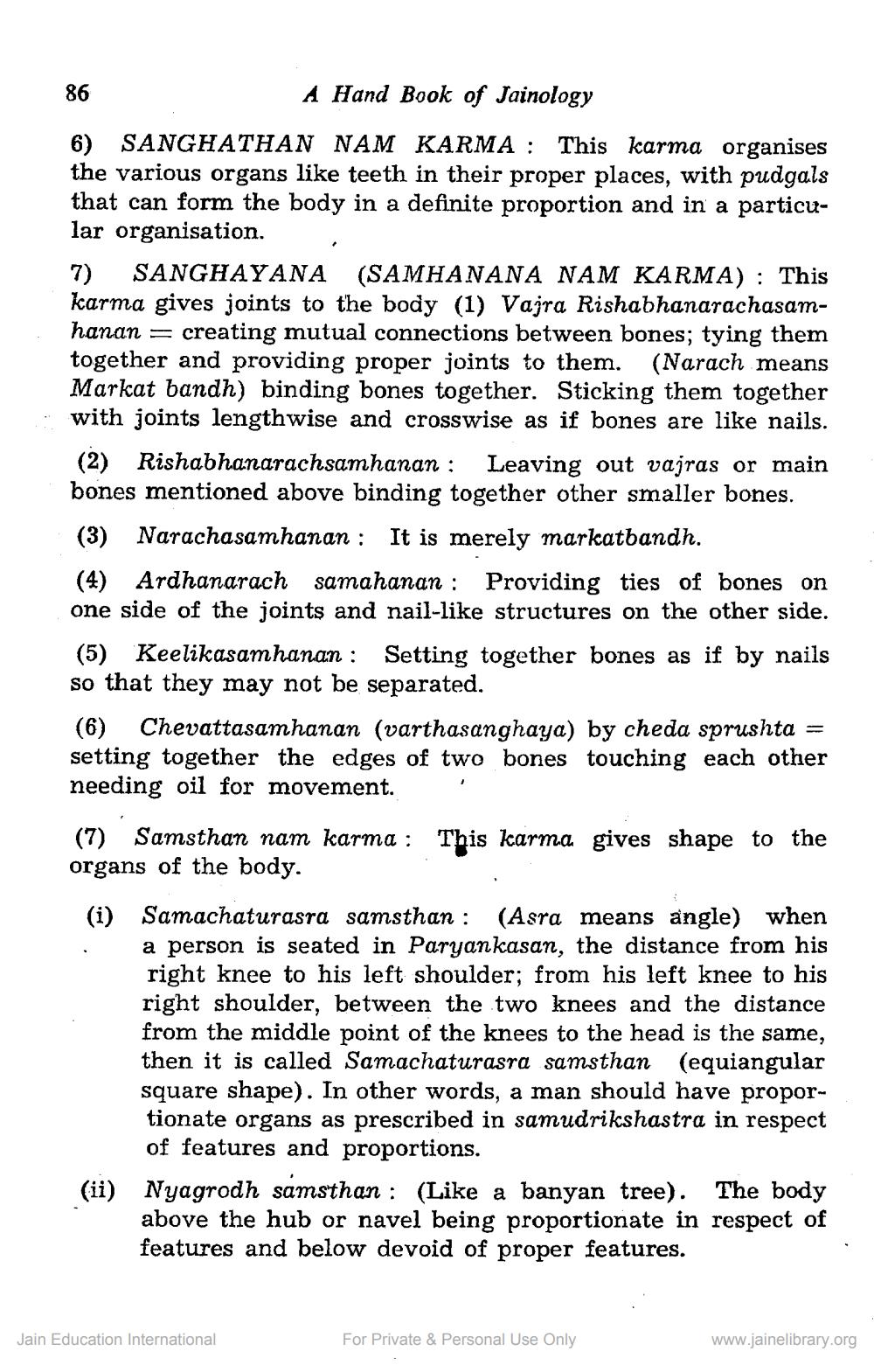________________
86
A Hand Book of Jainology
6 SANGHATHAN NAM KARMA: This karma organises the various organs like teeth in their proper places, with pudgals that can form the body in a definite proportion and in a particular organisation. , 7) SANGHAYANA (SAMHANANA NAM KARMA): This karma gives joints to the body (1) Vajra Rishabhanarachasamhanan = creating mutual connections between bones; tying them together and providing proper joints to them. (Narach means Markat bandh) binding bones together. Sticking them together with joints lengthwise and crosswise as if bones are like nails.
(2) Rishabhanarachsamhanan : Leaving out vajras or main bones mentioned above binding together other smaller bones. (3) Narachasamhanan : It is merely markatbandh. (4) Ardhanarach samahanan : Providing ties of bones on one side of the joints and nail-like structures on the other side. (5) Keelikasamhanan : Setting together bones as if by nails so that they may not be separated. (6) Chevattasamhanan (varthasanghaya) by cheda sprushta = setting together the edges of two bones touching each other needing oil for movement. '
(7) Samsthan nam karma : This karma gives shape to the organs of the body. (i) Samachaturasra samsthan : (Asra means angle) when
a person is seated in Paryankasan, the distance from his right knee to his left shoulder; from his left knee to his right shoulder, between the two knees and the distance from the middle point of the knees to the head is the same, then it is called Samachaturasra samsthan (equiangular square shape). In other words, a man should have proportionate organs as prescribed in samudrikshastra in respect of features and proportions. Nyagrodh samsthan : (Like a banyan tree). The body above the hub or navel being proportionate in respect of features and below devoid of proper features.
(ii)
Jain Education International
For Private & Personal Use Only
www.jainelibrary.org




